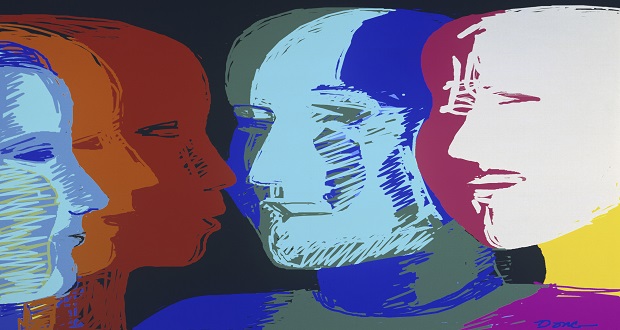
Think back to your childhood and adolescence. Who populated the communities where you spent most of your time? Did these people share similar values, racial and ethnic backgrounds, socioeconomic class, and religious backgrounds to you? If you answered no to all or most of these questions, you are probably in the minority in the United States.
Rampant histories and continued trends of segregation and redlining, in combination with discrimination, gentrification, and a property-tax-driven public school funding model, have created a status quo in which many of us are raised with those who look, behave, and believe like us. Many people don’t question this reality; particularly when it has been our experience since birth, it is something we either do not notice, or accept as normal.
Robin DiAngelo identifies that white people are taught, whether implicitly or explicitly, that they are not losing anything by living primarily among other white people. Two primary mindsets inform our neutral or positive interpretations of existing in homogeneous communities: Polarization and Minimization.
Minimization or “colorblind” rhetoric suggests that, because we are all essentially the same, difference doesn’t matter. In considering the communities we occupy, minimization suggests that we don’t lose anything by living with people who share our identities, because our experience of this is no different than it would be living with those who don’t share our identities. This is, of course, not true.
Polarization rhetoric emphasizes differences—with value judgements. (“We’re better than that group” or “they’re better than we are.”) It relies on judgements and harmful stereotypes about groups of people. One brand of polarization is white supremacy, which often underlies the polite-on-the-surface rhetoric with which we discuss “unsafe” neighborhoods or “bad” schools. Though race is rarely named in these conversations, it is understood implicitly that these spaces are occupied primarily by people of color, and that it is “safer” and “better” to live among (white) people like ourselves.
Minimization and polarization both serve the message that DiAngelo identifies, by respectively suggesting that we don’t lose anything, or might in fact gain something, by living among those like us. But this logic is faulty: We do lose out by not being exposed to difference, in critical ways.
First, we fail to develop the ability to relate to people with important differences from us. We become so accustomed to certain values and communication styles that when we encounter those who believe or behave differently, we have no strategies for making sense of this. As a result, we don’t understand where the person is coming from, and revert to assumptions or judgements about the person—rather than curiosity that could help us learn from them.
Additionally, when existing within homogeneous groups, we are left with few opportunities to counter harmful messages about other groups of people that we internalize through socialization. If most of the depictions we see of people of color consist of the evening news recounting criminal behavior, this in turn becomes the connotation we associate with these groups, particularly if we have few positive counter-examples (neighbors, peers, or colleagues of color) in our lives to challenge these depictions. As a result, we come to implicitly or explicitly fear those who are different from us, even when this may not be our intent.
Spending time with people who are different from us helps us to challenge and question our assumptions, reject stereotypes, learn about different perspectives and experiences, and develop the ability to relate to people more broadly. While many forces make it easy, particularly for those of us in dominant groups, to spend most of our time with people like us, the good news is, we can take intentional actions to disrupt this pattern. Here are a few ideas:
Spending time with people who are different from us helps us to challenge and question our assumptions, reject stereotypes, learn about different perspectives and experiences, and develop the ability to relate to people more… Share on X- If you grew up in a homogeneous community, consider how this affected your ability to relate to people different from yourself; what challenges have you encountered personally and professionally around difference? How might growing up in a more diverse community have better prepared you to navigate these situations? What did you miss out on growing up in the communities you did?
- As a parent, ensure that your children gain exposure to difference. If this doesn’t happen in your neighborhood, school, or faith community, seek it out through extracurricular opportunities, or involvement in activism or volunteering. Furthermore, make intentional choices about the media your children are exposed to, and incorporate multicultural characters and stories.
- Don’t consider school ratings in isolation. While a school setting that is appropriately challenging often plays an important role in student outcomes, this isn’t the only factor to consider when choosing the best opportunity for young learners. Consider the school community, and what opportunities, personality traits, and skills a young learner could develop in a diverse school setting that they might not in a homogeneous setting. Understanding different experiences shapes us into more compassionate and empathetic people. Furthermore, the ability to relate to others across difference is among the top skills universities and employers seek among applicants.
- Challenge your own and others’ perceptions of “bad neighborhoods,” by asking what informs this perception. Consider how segregation and redlining, and a systemic disinvestment in certain areas has contributed to unequal distributions of wealth, poverty, and crime across living areas—in ways that residents often have limited agency to shape.
- Before moving into an “up-and-coming” neighborhood, conduct research about the area and whether residents from already-marginalized communities are being pushed out to make room for the new interest. While initially this trend results in more diverse people cohabitating, over time, low income communities are priced out of areas and the population becomes largely homogeneous. Share this information in your community, and rather than supporting these trends, seek out mixed income housing initiatives, projects that don’t displace existing communities, and community-owned property opportunities.
Let’s take a stand to counter the narrative that there is nothing to lose in surrounding ourselves with people like ourselves.
Take a stand to counter the narrative that there is nothing to lose in surrounding ourselves with people like ourselves. Share on X



![Decolonizing Diversity, Equity, and Inclusion Work: … Means Naming White Supremacy Culture [In Ourselves] Part V](https://theinclusionsolution.me/wp-content/uploads/2020/05/decolonize-white-male-440x264.jpg)













